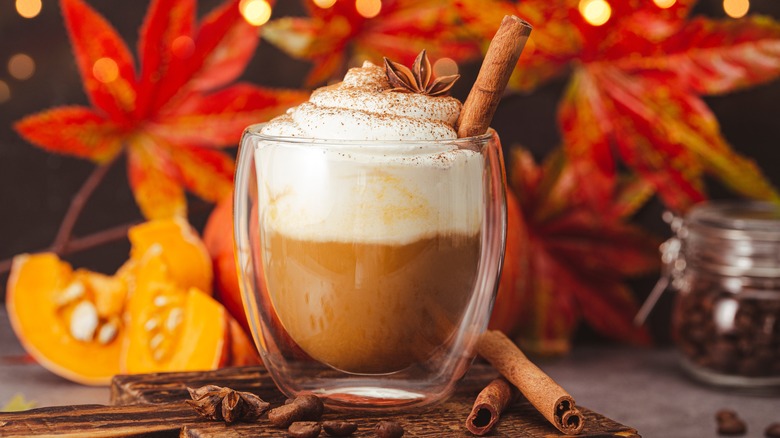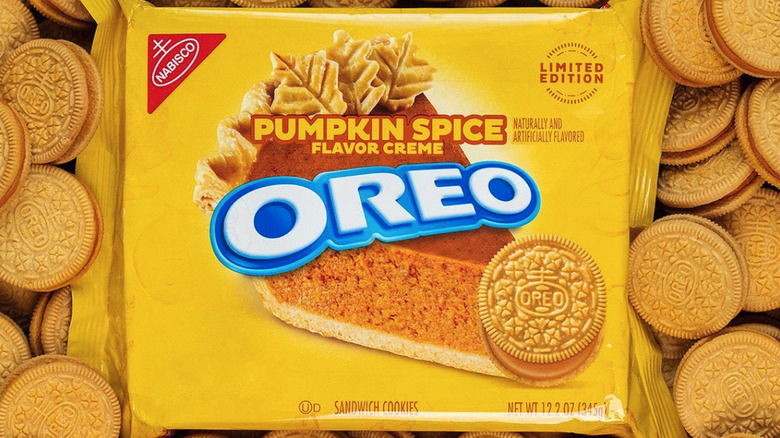Here's Why You Could Be Paying 160% More For Pumpkin Spice Products
It's fall, and you want your pumpkin spice everything — lattes, Oreos, cream cheese, and dog treats. It is consistently one of the most popular and sought-after fall flavors and grows in popularity each year. According to The Sun, some Starbucks locations in the U.K. have reported running out of the flavored syrup, leading a customer to ask, "Three Starbucks I've been to in the past week and none have the pumpkin spice — what's the point in advertising it if you don't have it anywhere??"
While the blend of spices has been around for quite a while, spice purveyor McCormick released a pumpkin pie spice blend in 1934, the one your grandma puts in pumpkin pie or carrot cake. But your treasured PSL — and the one that started the pumpkin spice craze — debuted in 2003. Adweek reports that it was developed by a team under Starbucks exec Peter Dukes, who said, "Nobody knew back then what it would grow to be," and the popular flavor has inspired countless other brands to follow suit. Since then, the coffee chain has sold more than 600 million pumpkin spice lattes, per CNN Business.
But this year, be prepared to open your wallet a bit wider to satisfy your pumpkin spice cravings.
The economics of why we'll pay more this year
To capitalize on the higher demand, pumpkin spice producers charge a "pumpkin spice" tax. It's all part of the market economy — remember your high school economics class? Supply and demand, or, higher demand means a higher price. This year the prices are slightly higher than in other years because of inflation, so you can expect to pay as much as 6% more than in 2020 for your pumpkin spice coffee creamer, CBS News reports. Starbucks' super popular pumpkin spice latte is $6.45 this year. The other side to the pricing conundrum is a tactic called scarcity marketing, or banking on the fact that consumers are worried they'll miss out on the once-a-year flavor and be willing to pay more for it. Marketing professor Kelly Goldsmith said, "The pandemic trained people to understand that things do run out ... scarcity marketing tactics are even more effective than they were pre-pandemic."
The pricing of pumpkin spice products is a multi-faceted issue and has seen some prices jump over 100% at some retailers. The biggest jumps have been seen at Whole Foods and Trader Joe's. Whole Foods' spiced pumpkin pancake and waffle mix is marked up 130%, while Trader Joe's Pumpkin Bisque has a 46% markup and its Pumpkin Spiced Teeny Tiny Pretzels cost 161% more.

